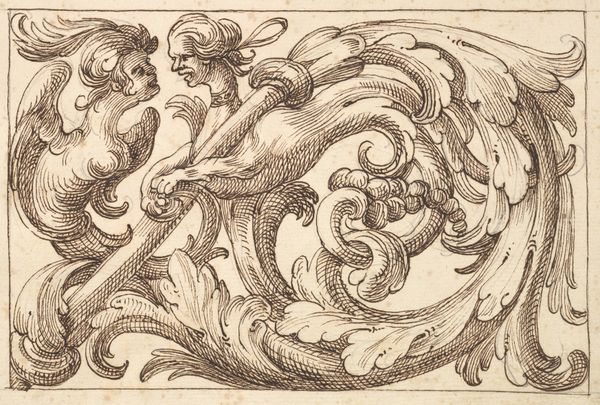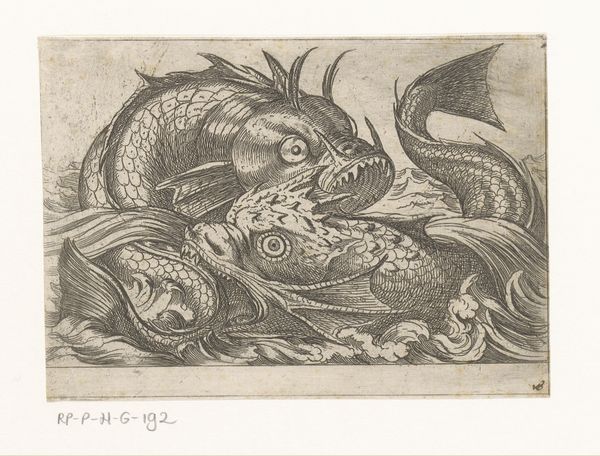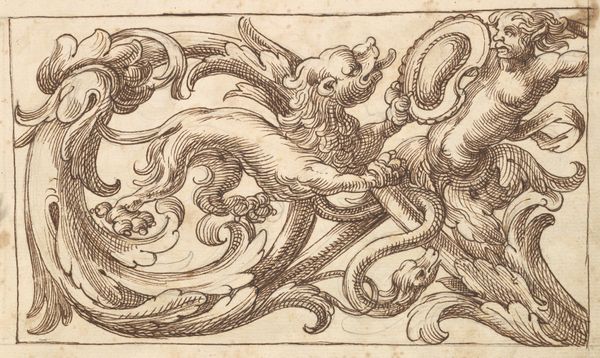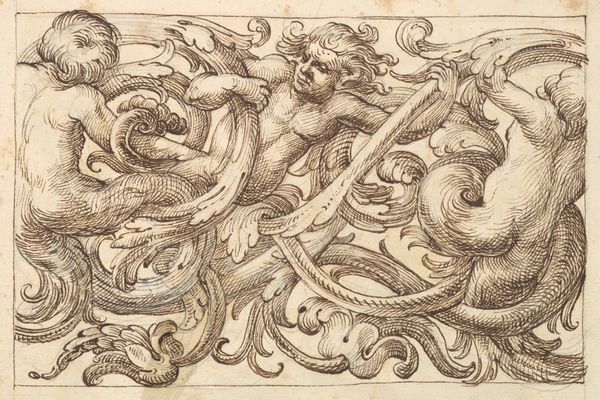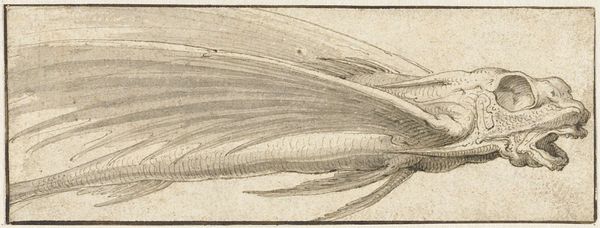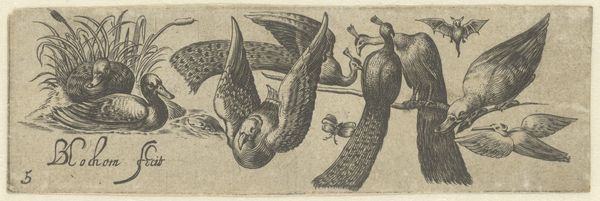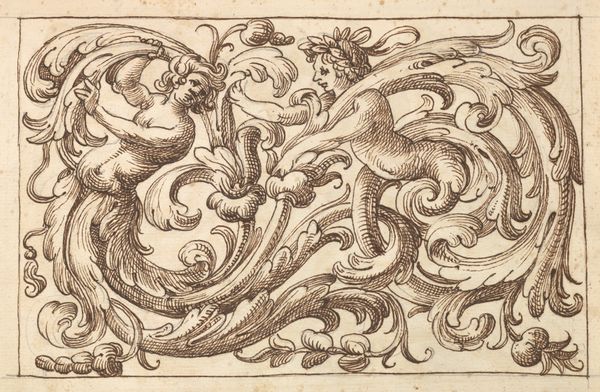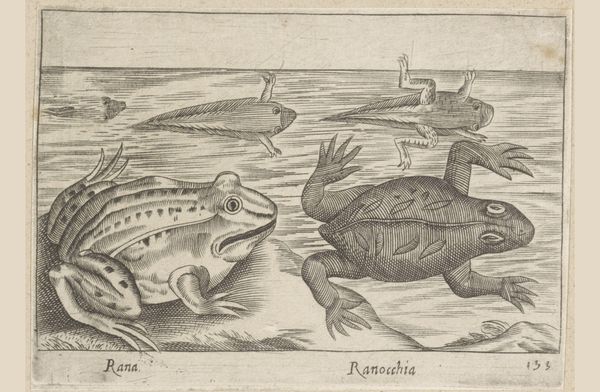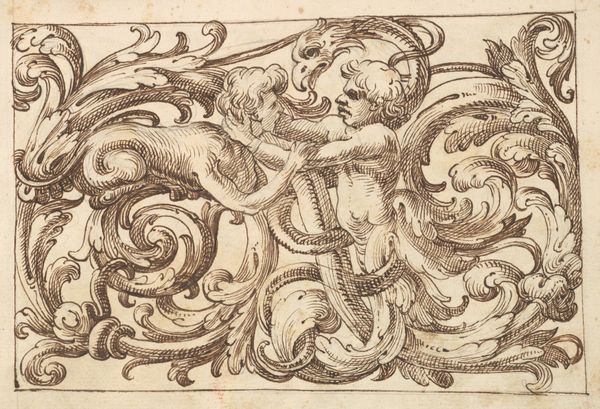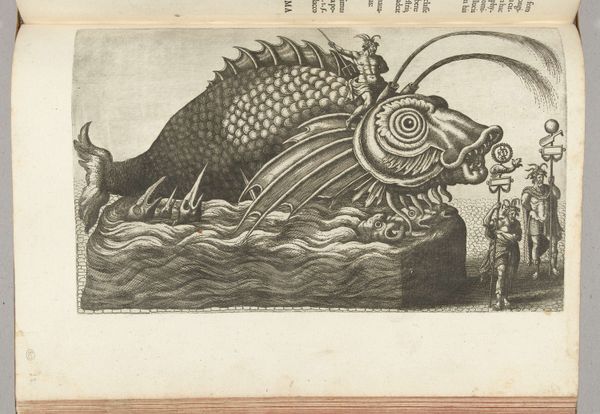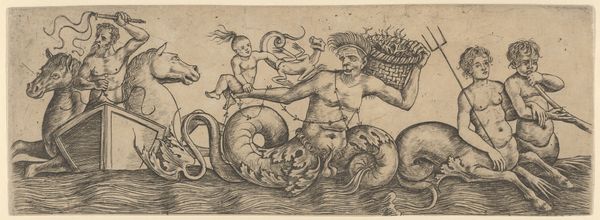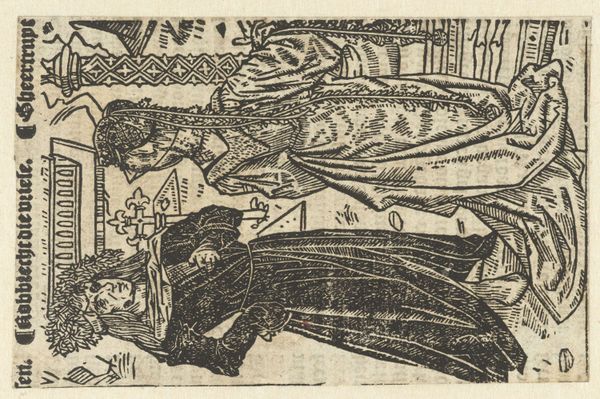
print, woodcut
#
medieval
#
germany
#
narrative-art
# print
#
figuration
#
woodcut
#
history-painting
#
northern-renaissance
Dimensions: 2 3/4 x 4 in. (6.99 x 10.16 cm) (image)
Copyright: Public Domain
Editor: Here we have "Jonah and the Whale," a woodcut from around the 16th century, attributed to an anonymous German artist and currently residing here at the Minneapolis Institute of Art. The strong contrast and dynamic composition really grabs your attention. What are your initial thoughts when you examine this print? Curator: The stark linearity and spatial flattening are quite compelling. Notice how the artist uses hatching to suggest volume, yet the overall effect remains strikingly graphic. The whale, almost comical in its disproportion, is rendered with a crude yet effective naturalism. How does the composition guide your eye? Editor: I keep circling back to the whale's eye; it's so large and seems to look right at you. Also, is it just me, or does the water seem almost like it is made up of solid, carved lines? Curator: Precisely. The eye functions as a focal point, amplifying the drama. The stylized water, while perhaps not "realistic", serves to emphasize the artifice of the image. It foregrounds the artist's hand, reminding us that this is a constructed representation, a deliberate arrangement of lines and forms. What is the effect of that stark composition? Editor: I suppose by emphasizing the artificial, it encourages you to think more about the story, about the message, and less about, say, trying to imagine what a real whale looks like. Curator: An astute observation. The power of this image resides not in its mimetic accuracy but in its formal rigor and suggestive rendering. The narrative becomes a vehicle for exploring the very possibilities of the woodcut medium. Ultimately, this is less about the "truth" of the Biblical story and more about the enduring power of line and form. Editor: So it really calls attention to the method used to make the art? Curator: Indeed. Analyzing such elements, devoid of their context, really shines a light on the craftsmanship and artistry on display here.
Comments
minneapolisinstituteofart over 1 year ago
⋮
Jonah spent three days and nights in the whale, actually a "large fish" (Jonah 1:17), usually portrayed as a dragon-faced, mythological ketos. From early times, artists linked Jonah's ejection from the fish with Christ's Resurrection, which is one reason the theme was so popular. This woodcut shows the naked prophet being delivered onto dry land, then happily scurrying away, as if reborn, in the extra episode in the corner.
Join the conversation
Join millions of artists and users on Artera today and experience the ultimate creative platform.
